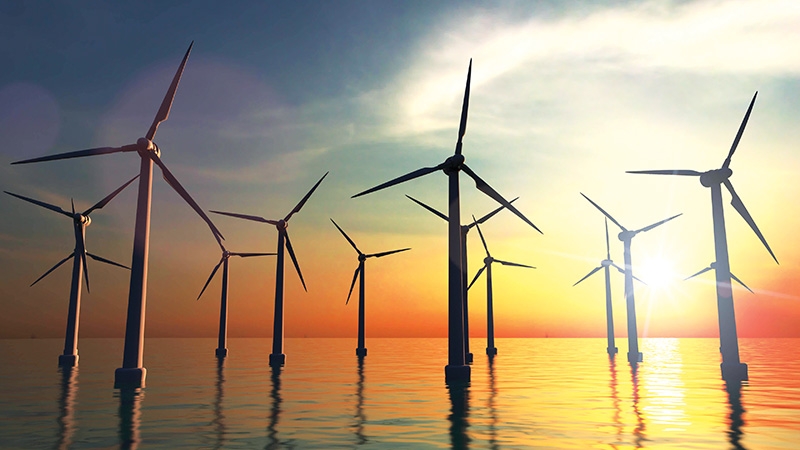Renewable funding solutions sought
 |
| Offshore wind power projects are required to help ensure Vietnam’s energy security Photo: Shutterstock |
A series of issues revolving around a master plan, grid connection, feed-in tariffs (FiT), power purchase agreements, energy efficiency, and battery storage are to be put on the table for discussion at the annual Vietnam Business Forum (VBF) event on January 10, themed on the roles and support for the business community in rapid and sustainable development.
In 2019, Vietnam witnessed robust growth in renewables with a series of proposed projects as well as construction and grid connections thanks to competitive FiTs of both wind and solar power projects. In contrast, some ventures became a victim of themselves due to a lack of grid space that forced them to reduce capacity since July, as new solar farms also connected to the grid.
As sources of financing for coal thermal in Vietnam have declined, more reliable energy sources, renewables, and increased efficiencies have continued to advance, stated the VBF in its Made in Vietnam Energy Plan 2.0 report. Accurate assessment of cost, tariffs, taxes, and pricing can lead to a regulatory environment that mobilises the private sector to meet Vietnam’s energy goals of reducing energy intensity and increasing clean energy production.
In fact, as the cost of solar and wind has declined relative to other energy sources, investor interest in renewables has increased, according to the report.
John Rockhold, chairman of VBF’s Power and Energy Group said “An energy strategy focusing on renewables, natural gas, energy efficiency, and battery storage will attract private sector investment.”
He also suggested that “due to the sharp increase in wind and solar power, especially in the southern region, Vietnam needs to quickly invest in strengthening and expanding its transmission and distribution network.”
There is no defined plan for the private sector to install a grid and distribution network so far, although Trung Nam Group already submitted to put up the 500kV line, which runs 15.5km from Thuan Nam district in Ninh Thuan province to Binh Thuan’s Tuy Phong district.
Another billion-dollar project, the $11.9 billion Thang Long offshore scheme with total capacity of 3,400MW that was proposed by UK-based Enterprize Energy, is expected to become the largest offshore wind power project which, if realised, will greatly contribute to ensuring the country’s energy security. However, it is facing a high risk of missing out on the FiT of 9.8 US cents per kilowatt hour for offshore projects that is applied to a part or all grid-connected wind farms starting operation before January 1, 2021.
Vietnam Energy Association chairman Tran Viet Ngai suggested previously at a recent conference that “to ensure the effectiveness of the Thang Long wind power project, we suggest that while sketching out of the project schedule, we must ensure consistency among phases, from plant construction, transmission lines, and substation planting operation each year to completion.”
Ngai added that attention must be paid to investment in transmission lines and substations, as well as thrashing out who will be in charge of consumption of Thang Long’s wind power supply between the investor and Electricity of Vietnam.
Responding to VIR, founder and chairman of Enterprize Energy Ian Hatton admitted that he is aware that Thang Long “cannot meet Decision No.39/2018/QD-TTg on development of wind power projects that set a timeline for 9.8 US cents,” meaning it will indeed not be entitled to benefit from the FiT.
What the stars mean:
★ Poor ★ ★ Promising ★★★ Good ★★★★ Very good ★★★★★ Exceptional
Related Contents
Latest News
More News
- Honda launches electric two-wheeler, expands charging infrastructure (January 12, 2026 | 14:00)
- Vietnam striving to ease air pollution (January 09, 2026 | 14:41)
- Petrovietnam Gas awards first multi‑year LNG deal to Shell (January 09, 2026 | 14:38)
- Advancing the net-zero journey: Carlsberg Vietnam’s sustainability progress in 2025 (January 09, 2026 | 09:49)
- The green hydrogen and ammonia future for Vietnam (January 06, 2026 | 15:03)
- Green transition to close $20 billion annual investment gap (December 31, 2025 | 11:59)
- Australia contributing to Vietnam’s climate change responses (December 30, 2025 | 11:37)
- CME Solar strengthens position in Vietnamese renewables (December 30, 2025 | 11:21)
- Self-care signals shift towards sustainable healthcare (December 30, 2025 | 10:12)
- GreenYellow marks five years of clean energy growth in Vietnam (December 26, 2025 | 15:51)

 Tag:
Tag:



















 Mobile Version
Mobile Version